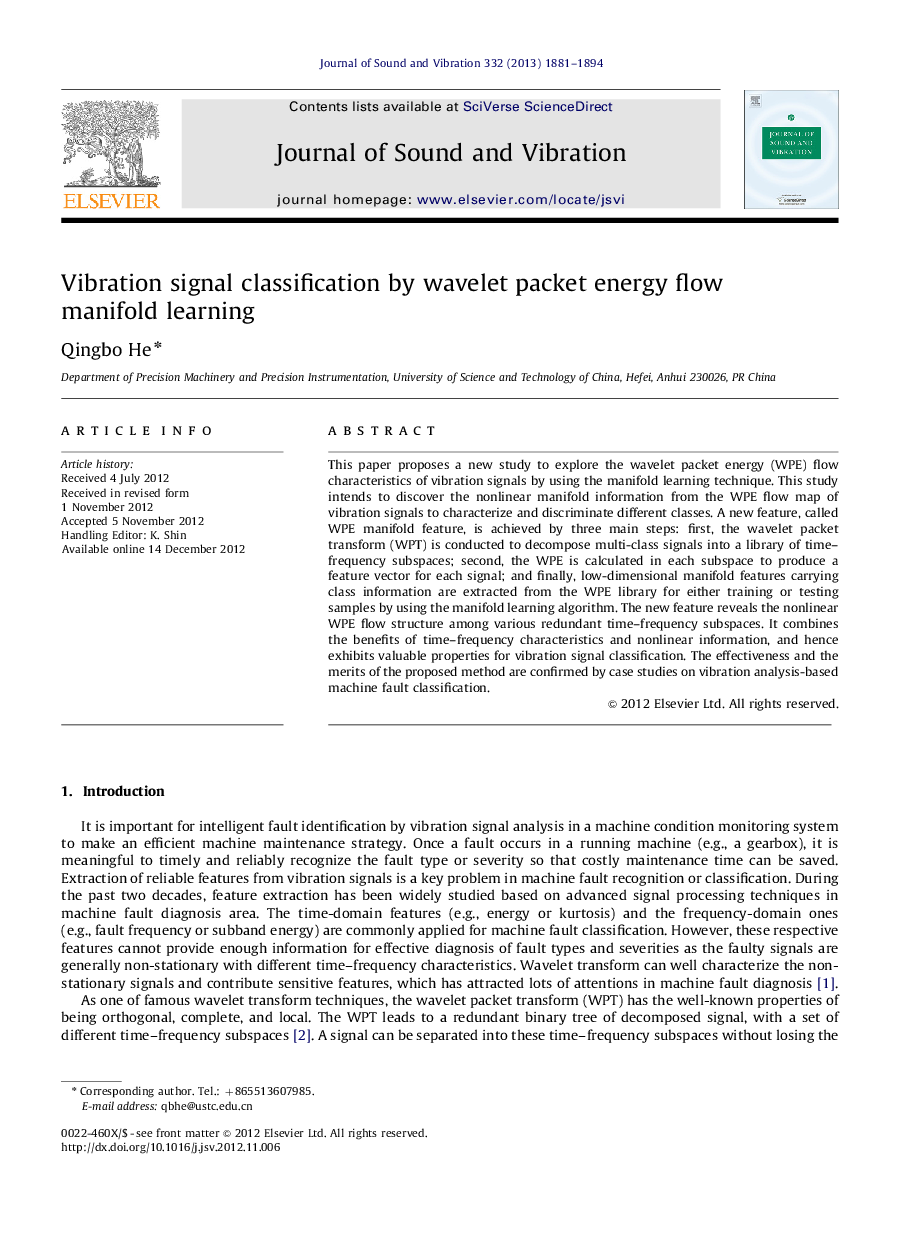| Article ID | Journal | Published Year | Pages | File Type |
|---|---|---|---|---|
| 287923 | Journal of Sound and Vibration | 2013 | 14 Pages |
This paper proposes a new study to explore the wavelet packet energy (WPE) flow characteristics of vibration signals by using the manifold learning technique. This study intends to discover the nonlinear manifold information from the WPE flow map of vibration signals to characterize and discriminate different classes. A new feature, called WPE manifold feature, is achieved by three main steps: first, the wavelet packet transform (WPT) is conducted to decompose multi-class signals into a library of time–frequency subspaces; second, the WPE is calculated in each subspace to produce a feature vector for each signal; and finally, low-dimensional manifold features carrying class information are extracted from the WPE library for either training or testing samples by using the manifold learning algorithm. The new feature reveals the nonlinear WPE flow structure among various redundant time–frequency subspaces. It combines the benefits of time–frequency characteristics and nonlinear information, and hence exhibits valuable properties for vibration signal classification. The effectiveness and the merits of the proposed method are confirmed by case studies on vibration analysis-based machine fault classification.
► A new study is proposed to explore WPE flow characteristics of vibration signals. ► WPE manifold feature is proposed to reveal the nonlinear WPE flow structure. ► It combines benefits of time–frequency characteristics and nonlinear information. ► Proposed feature exhibits excellent clustering and classification performance. ► The feature is valuable for vibration analysis-based machine fault classification.
